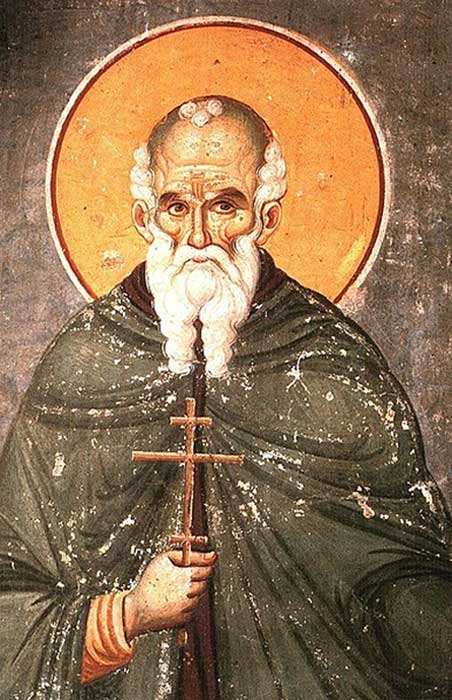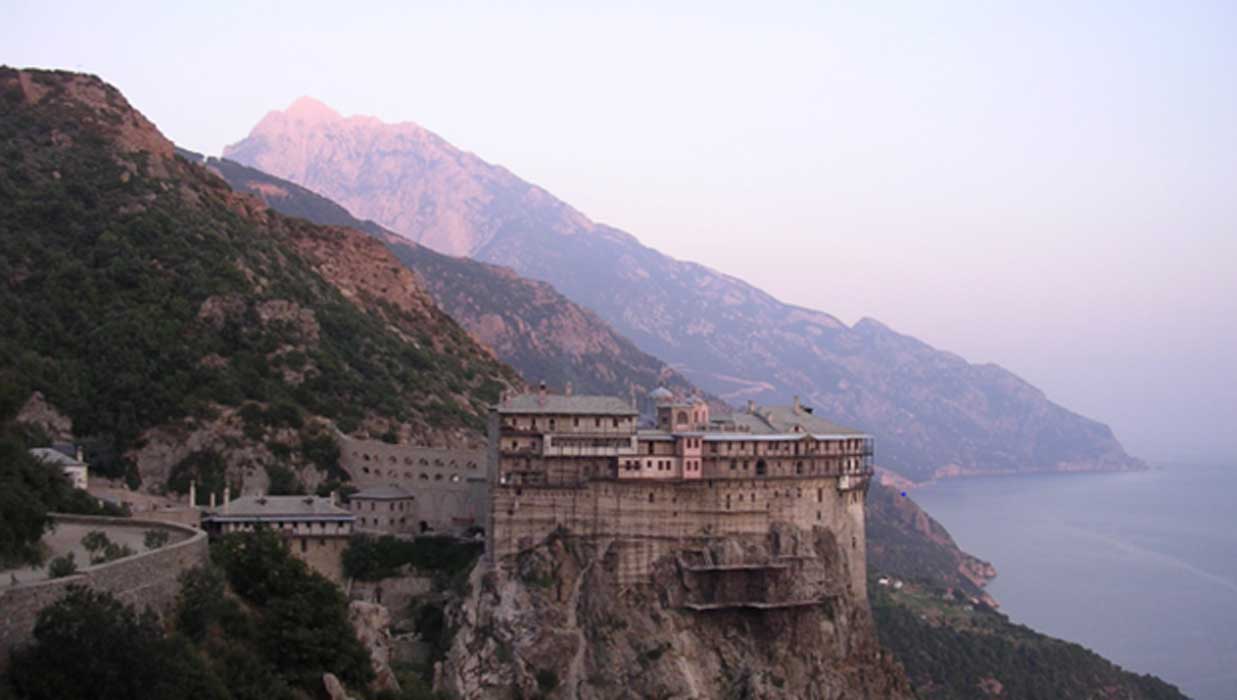Mount Athos – Garden of the Mother of God and Holiest of Holy Mountains to Some
Mount Athos, known also as the Holy Mountain, is a mountain located in Greece. The site is a semi-autonomous republic of Eastern Orthodox monks and is considered to be one of the holiest places of the Eastern Orthodox Church. There are 20 large monasteries on Mount Athos, along with many other smaller ones, all of which come under the jurisdiction of the Ecumenical Patriarch of Constantinople.
Myths of the Origin of Mount Athos
Mount Athos is located on the easternmost of the three promontories of the Halkidiki peninsula in northern Greece. This mountain was already significant in ancient times, as there is an ancient Greek myth explaining how the mountain came into being. According to this myth, during the Gigantomachy (the battle between the gods and giants) there was a Thracian giant by the name of Athos. During the battle the giant threw a huge rock at Poseidon. The rock, however, slipped from Athos’ hand, fell into the sea and became Mount Athos. In another version of the myth, it was Poseidon who hurled the rock at Athos. The giant was crushed underneath the rock which became a mountain bearing his name.

Poseidon (left) holding a trident and battling a Giant. (Bibi Saint-Pol / Public Domain)
According to the 5 th century Greek historian Herodotus, the Persian king Xerxes I, had dug a canal through the Athos isthmus during his invasion of Greece. This was done in order to avoid having to sail his fleet around this treacherous cape. Traces of this canal, which validates Herodotus’ claims, have been identified in modern times. Several small Greek settlements were built on Mount Athos up until the 3 rd century BC, though these did not last long, and the site remained uninhabited for many centuries.
The Monks of Mount Athos
The first monks arrived on Mount Athos during the 5 th century AD, drawn perhaps by the secluded nature of the site. Additionally, according to Christian tradition, when the Virgin Mary and Saint John the Evangelist were sailing to visit Saint Lazarus on Cyprus, they were blown off course and landed at Mount Athos. The Virgin Mary admired the beauty of the place so much that she asked God to give the mountain to her as a present. God granted her request and Mount Athos has been known since then as the ‘Garden of the Mother of God’. It is due to this tradition that women have never been allowed to visit this sacred site. Incidentally, female animals (with the exception of wild animals) are also prohibited from stepping foot on Mount Athos.
Although Mount Athos was already home to monks since the 5 th century AD, it was only in 963 AD that organized monastic life began at the site when the first monastery, the Great Laura, was founded by Saint Athanasius the Athonite, with the aid of his patron the Byzantine Emperor Nikephoros II Phokas. During the reign of Nikephoros’ successor, John I Tzimisces, the Rule of Saint Athanasius was imposed on the hermits living on Mount Athos and the site received its first charter.
- Ancient manuscript returns home to Greek monastery on Mount Athos
- Living Remnants of Early Christianity: The Mar Saba Monastery
- Alone Need Not Be Lonely: What Joyous Solitude of Early Hermits Can Teach Us

Saint Athanasius the Athonite of Athos. (Sebastian Wallroth / Public Domain)
The Monks Numbers Increased – Then Declined
In the centuries that followed, Mount Athos flourished as a center of Orthodox monasticism, as it received endowments not only from the Byzantines, but also from other Orthodox states. By the 15 th century, there were as many as 40 monasteries on Mount Athos and the number of monks living there is estimated to have been around 20,000. In 1430, Thessaloniki was captured by the Ottoman Turks and the monks of Mount Athos submitted to Turkish rule. As a result of this, the monasteries rapidly declined, became impoverished, and adopted a more liberal form of governance.

Mount Athos, Greece. Aleksandr / Adobe)
During the 19 th century, the War of Greek Independence, many of the monasteries’ libraries were burnt down by the Turks. In the same century, the patronage of the Russian tsars expanded the Russian monasteries and the properties on Mount Athos. In 1924 Mount Athos gained its present constitution, which made it part of Greece, while allowing it to retain its own autonomous government. This was guaranteed by the Constitution of Greece which was created in 1975. Finally, in 1988, Mount Athos was inscribed by UNESCO as a World Heritage Site.
Top image: One of the 40 monasteries on the Holy Mount Athos. Source: The Eastern Orthodox / CC BY-SA 2.0
By Wu Mingren
References
Gray, M., 2019. Mount Athos. [Online] Available at: https://sacredsites.com/europe/greece/mount_athos.html
Halkidiki Tourism Organisation, 2019. Mount Athos. [Online] Available at: https://www.visit-halkidiki.gr/mount-athos/
stanestane, 2019. Mount Athos. [Online] Available at: https://www.atlasobscura.com/places/holy-mount-athos
The Editors of Encyclopaedia Britannica, 2018. Mount Athos. [Online] Available at: https://www.britannica.com/place/Mount-Athos
UNESCO, 2019. Mount Athos. [Online] Available at: https://whc.unesco.org/en/list/454
Who, What Why, 2016. Why are women banned from Mount Athos?. [Online] Available at: https://www.bbc.com/news/magazine-36378690



















